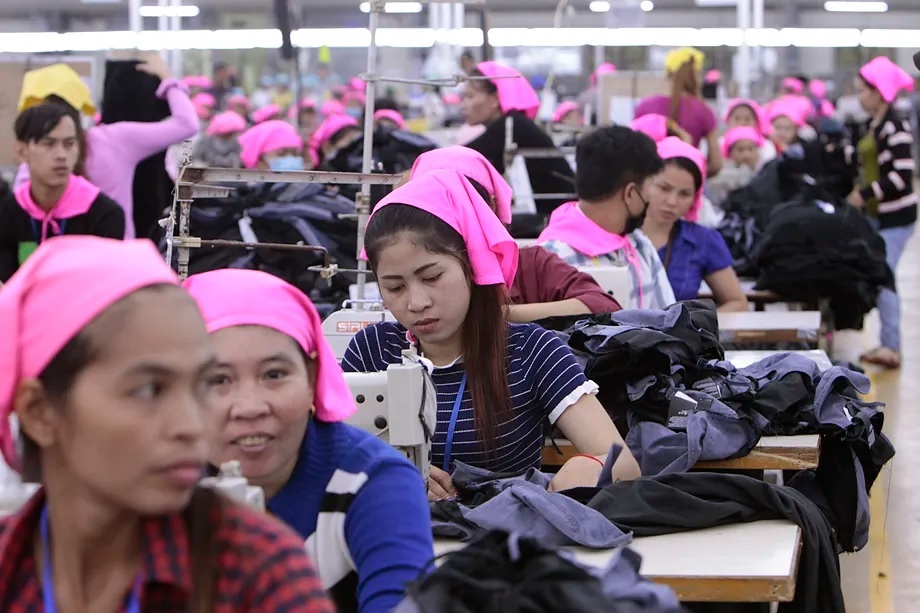Many young Cambodians claim to live in a country of orphans with a future. Firstly, because after the genocide of the Khmer Rouge (1975-1979), the Maoists who promoted a peasant revolution and ended up exterminating a third of the population, the population pyramid was deeply altered. The subsequent baby boom led to the opportunity for development: the current median age in Cambodia is 26 years old, and 50% of the 17 million inhabitants are under 24 years old.
"We are one of the poorest countries in Asia, but also one of the youngest, and that is our main driving force for the future. We can grow a lot if investment is made in education and employment," says a university student named Tes, who represents a promising generation of young people eager to leave behind the bloody past and help build a prosperous Cambodia.
Tes is playing with friends in a kind of tag game on a large esplanade in front of the Royal Palace of Phnom Penh, next to the night markets along the Mekong River. There are dozens of varied food stalls, cafes, and large families picnicking on the grass. It is the brightest face of the capital, vibrant nights with a healthy youthful energy in a well-maintained place full of lights.
This reality coexists just a few meters away from the red-light districts full of sex tourists, hostels with signs begging customers not to bring underage prostitutes to their rooms, and marginalized neighborhoods where extreme poverty abounds. A little further away, on the outskirts, is the ecosystem of textile factories that have turned Cambodia into an important regional manufacturing center, with major brands diverting a portion of their production here.
"Many manufacturers, especially during the pandemic, to diversify their supply chains, moved some plants from China to Cambodia. Although one of the main reasons is that working conditions have improved a lot in China, starting with wages, while here labor is still very cheap, and there is a lot of labor exploitation," explains Sa Bin, a former employee of a Nike plant who now owns a motorcycle rental company. A few months ago, the investigative outlet Pro Publica released a lengthy report on how workers producing Nike items in Cambodia have been fainting for years due to extreme heat and long shifts of over 14 hours without leaving factories that lack air conditioning and where fans often break down.
Despite the precarious conditions in the factories, many Cambodians argue that the boom in the textile industry has provided many young people, especially from rural areas, with employment and has rescued many women from prostitution. For all these reasons, the tariff war unleashed by President Donald Trump was a blow to a country where nearly 40% of all exports, mostly from the textile factories surrounding Phnom Penh, go to the United States.
Trump hit this Asian country with 49% tariffs citing the huge trade imbalance: Washington imports about $9.9 billion annually and exports only $264 million. Cambodia panicked with the announcement, just as it breathed a sigh of relief when the U.S. froze the tariffs. "It is ridiculous to seek a trade balance with a poor country like Cambodia. We cannot afford to buy more from the U.S.," says a merchant at the night market in Phnom Penh.
It is estimated that there are over a million people working in Cambodia's garment industry, and around 80% of these workers are women. The minimum wage is around 200 euros per month. "Cambodia now survives thanks to the textile industry. Trump already did us a lot of harm when he ordered the closure of foreign aid programs (USAid, which had a strong presence in this country). But with the tariffs, many factories will close, and it will be a disaster for our economy," says a tour guide named Lim.
The void and apathy that the U.S. is leaving in Cambodia, as in many other countries in the region, is being filled by China, which has been making significant investments that are already visible in some neighborhoods of Phnom Penh: hotels, office towers, bridges, shopping centers, schools... A few days ago, it was announced that the Chinese electric car giant, BYD, would start building an automobile factory in the Cambodian city of Sihanoukville to produce 10,000 vehicles per year.
During Trump's first trade war (2018), Beijing diverted some of the production it sent to the U.S. to third countries in Southeast Asia. This is one of the reasons (products made in China are labeled Made in Cambodia) why nations like Cambodia were targeted with Washington's highest tariffs.
At the end of April, Chinese President Xi Jinping made a tour of several Asian neighbors with a stop in Phnom Penh. A trip that coincided with a new blow from the U.S. to Cambodia with the aim of harming Beijing once again. Trump decided to expand the trade dispute with tariffs targeting solar panel imports produced by Chinese manufacturers in Southeast Asia, especially at Chinese companies based in Cambodia, a country that, unintentionally, has become stuck in the middle of Trump's trade war against China.
